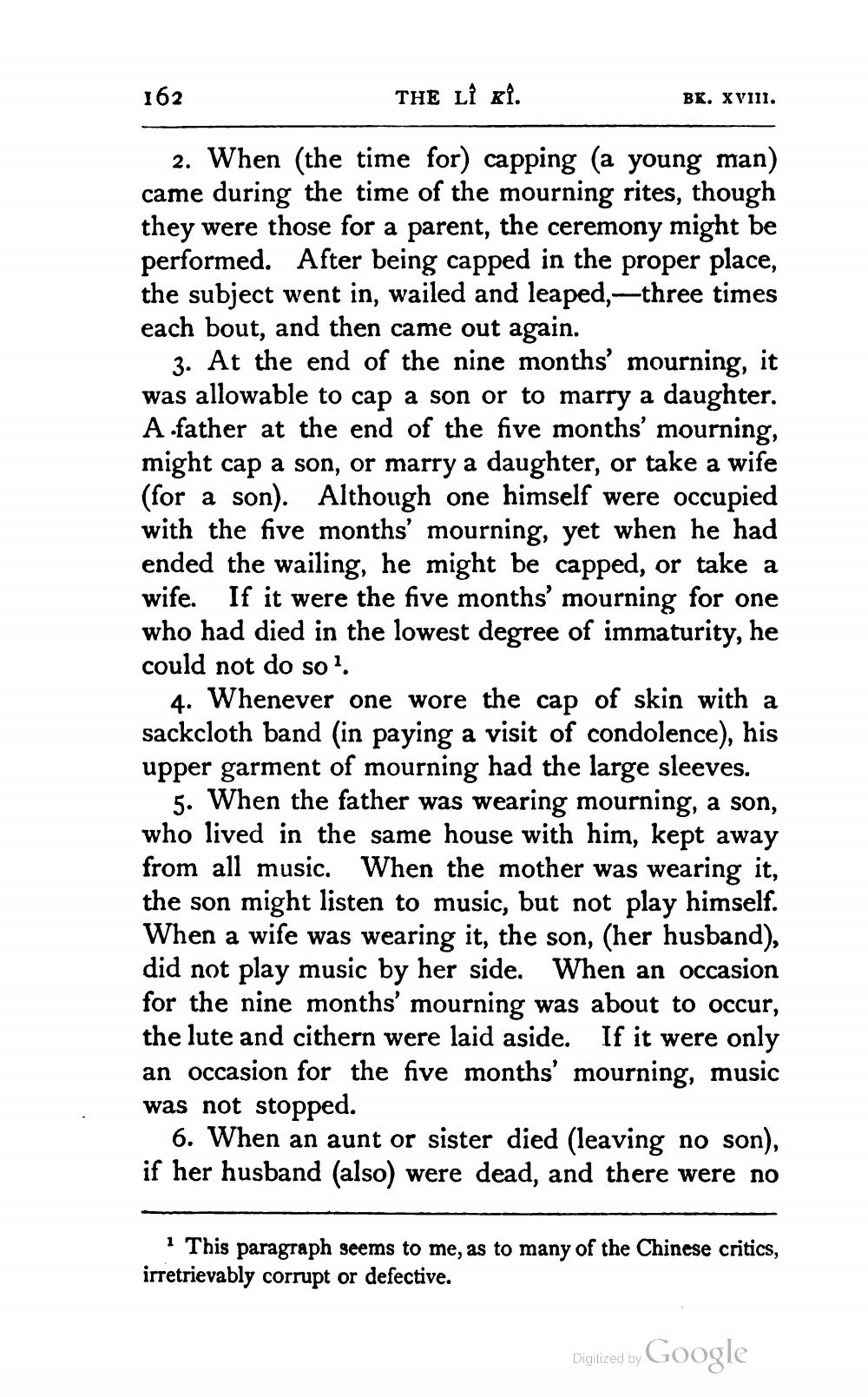________________
162
THE LÎ KI.
BK. XVIII.
2. When (the time for) capping (a young man) came during the time of the mourning rites, though they were those for a parent, the ceremony might be performed. After being capped in the proper place, the subject went in, wailed and leaped, three times each bout, and then came out again.
3. At the end of the nine months' mourning, it was allowable to cap a son or to marry a daughter. A father at the end of the five months' mourning, might cap a son, or marry a daughter, or take a wife (for a son). Although one himself were occupied with the five months' mourning, yet when he had ended the wailing, he might be capped, or take a wife. If it were the five months' mourning for one who had died in the lowest degree of immaturity, he could not do so.
4. Whenever one wore the cap of skin with a sackcloth band (in paying a visit of condolence), his upper garment of mourning had the large sleeves.
5. When the father was wearing mourning, a son, who lived in the same house with him, kept away from all music. When the mother was wearing it, the son might listen to music, but not play himself. When a wife was wearing it, the son, (her husband), did not play music by her side. When an occasion for the nine months' mourning was about to occur, the lute and cithern were laid aside. If it were only an occasion for the five months' mourning, music was not stopped.
6. When an aunt or sister died (leaving no son), if her husband (also) were dead, and there were no
1 This paragraph seems to me, as to many of the Chinese critics, irretrievably corrupt or defective.
Digitized by Google




